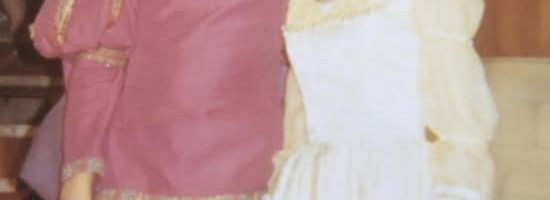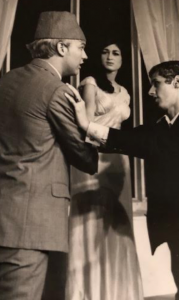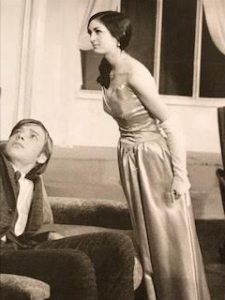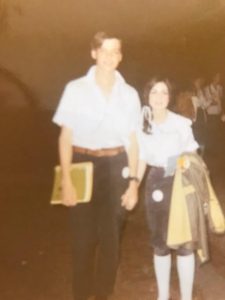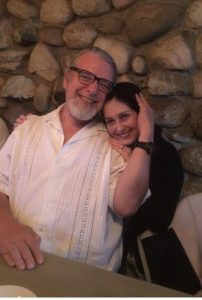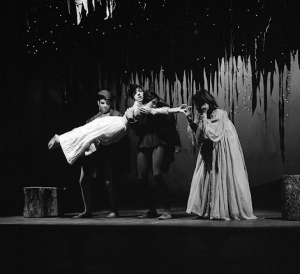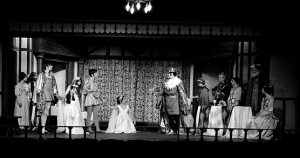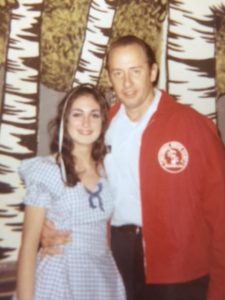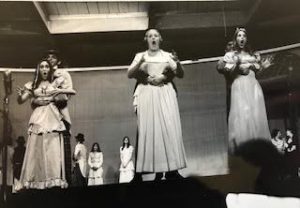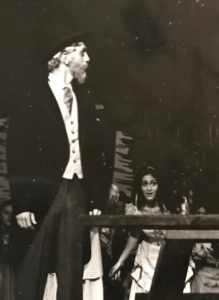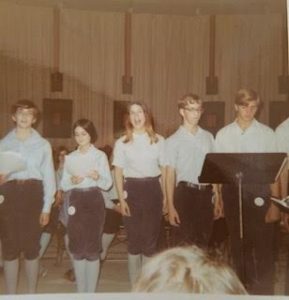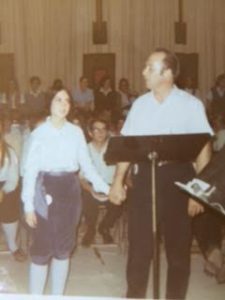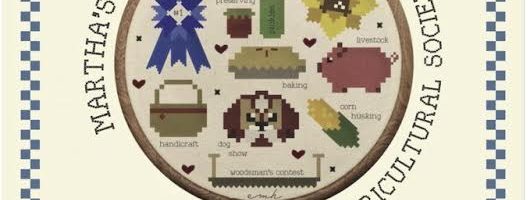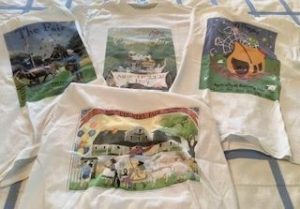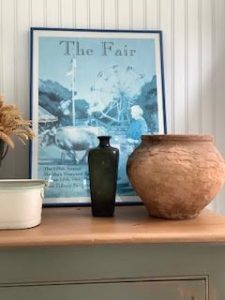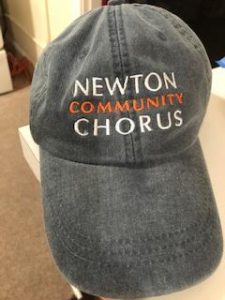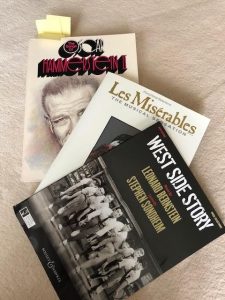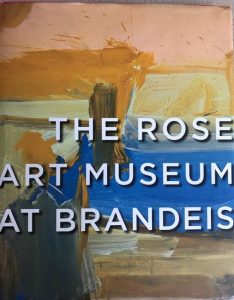There is a certain time in one’s life when she knows she is ready; she is in her prime. That happened for me the summer of 1969, my sixth and final at the National Music Camp (now the Interlochen Arts Camp). Talent matters, but seniority does too. I had put in my time and blossomed before the faculty’s eyes. As I wrote in Dude – A Message of Love, I had known some of my teachers most of my life and I knew they appreciated me. That summer, I was rewarded.
My lifetime friendships were also in place. I wrote about one (and mentioned the others) in Valerie. These helped me to flourish as well. I remain close to all those women (actually, the entire group of voice and drama majors). Many of us have communicated regularly throughout the pandemic, bringing great therapeutic comfort.
We auditioned for all our roles in the first few days of the summer. I was in Morning Drama. We presented three shows, including the Shakespeare. That season, I played Irene Livingston, a sophisticated actress in Moss Hart’s “Light Up the Sky” and Hermia, the young, star-crossed lover in “A Midsummer Night’s Dream”, both great roles for me. The Featured photo is me as Hermia with Dave Maier (still a close friend) before the opening of the show, outside our theatre. My dear friend Emily did my hair; beautifully might I add! She even trimmed my hair on my wedding day. I trust her with my tresses.
Above I am in the last act of “Light Up the Sky”, wearing a shimmering gold gown and long white gloves, having come from my theater opening (in the play). Years later I spoke with Kitty Carlisle, who originated the role on Broadway that her husband wrote for her. I told her I’d played her part. She asked if I had become a professional actress – regrettably, no.
But that summer I sparkled. In the above photo I’m with Carl Staub, playing the role of the young playwrite. He was also my steady boyfriend for a period, adding to my delight. He even gave me his class ring to wear. It was too large, so I held it in place by wearing mine over it. I so wanted to be in a relationship. We walked around campus holding hands. Puppy love…
It ended, I was crushed. After exchanging holiday cards, I never heard from him again (we now communicate via Facebook), but someone was in touch with him and he showed up three summer’s ago when we all met for the “Celebration of Life” for our beloved Operetta teacher, Dude Stephenson; Simple Gifts. We went out to dinner in excellent restaurants in Traverse City every night and had time to talk. Carl pulled out of his wallet my high school class photograph. He’d had it laminated! I read what I wrote on the back. I, obviously, had sent it to him in that Christmas card and wrote about our relationship. That night, we spoke about it; “You broke up with me”, I reminded him. “You said your mother didn’t like me”, he rebutted. My jaw dropped. “My mother didn’t like anyone!” And the years fell away.
I loved playing Hermia too… “Little again, nothing but lower and little. Why will you suffer her to flout me thus? Let me come at her!” Then I threw myself at Helena (the guys caught me) who was after MY guy, thanks to the mischievous fairies, who cast a spell on the other lovers in the forest. I was going to claw her eyes out, or at least tear out her hair; a real, staged cat fight!
Choir and Modern Dance were wonderful classes. I loved them both and always put my all into whatever I did, but Operetta ruled. It was the last class of the day, beginning at 3:30pm. We always performed Gilbert and Sullivan. This summer was the “The Sorcerer”. Here I am onstage, before the show with Dude.
We all auditioned, but there were few leads and only the best actually got parts. I had a decent voice, but not outstanding. I knew that. But Dude favored the theater people and gave us bits to do throughout the show. With about 90 women in the chorus, only those who had special roles got their names in the program.
I had two roles in this show. During the overture, Dude staged a pantomime and I was one of three village belles (yes, that is “Lysander” as my partner; we were well-matched; no, we never dated). And when John Wellington-Wells (the sorcerer) does his conjuring, I was a “sprite of earth and air” in a special hooded costume, flitting on and off the stage as he invokes the spirits in his incantation, as was a certain Marcy Zussman, younger sister of our Retrospect founder, John. It was great fun to do those little bits and get some recognition.
Our operetta was always performed during the 6th weekend of camp. That came to be alumni weekend as well. With such a large group performing, parents came (my own included) from across the country and the shows were always sold out. Now there were only two weeks left to camp. We performed the Shakespeare the next weekend, but Operetta had nothing remaining to rehearse. This particular summer, Dude and Ken Jewell (the music director) decided to perform an all-Irving Berlin concert. There were no auditions; songs were assigned and lots of fun tunes for all to sing. Our leaders even sang “A Pretty Girl is Like a Melody”. I finally got a chance to perform in a small ensemble: we sang “There’s No Business Like Show Business” and brought down the house!
Christie is singing, Steve is on her left. We all remain great friends. Finally Operetta, the last class of the last week of my last summer was over. It was time for Dude to pass out his awards, separate from the big ones that would be awarded after Sunday services the next morning. He had a special award for Best Lead, but also one for Best Chorus person (it could go to multiple people). I had won it the two previous summers. And again, he called my name and pulled me up front to give me a special presentation and accolade. Years later, when he was celebrating the first 50 years of Operetta, he declared (and made a plaque for it) that said I was the Best Female Chorus member over the first 25 years! But here I am, receiving Dude’s praise, which we all craved. It all came together for me.


